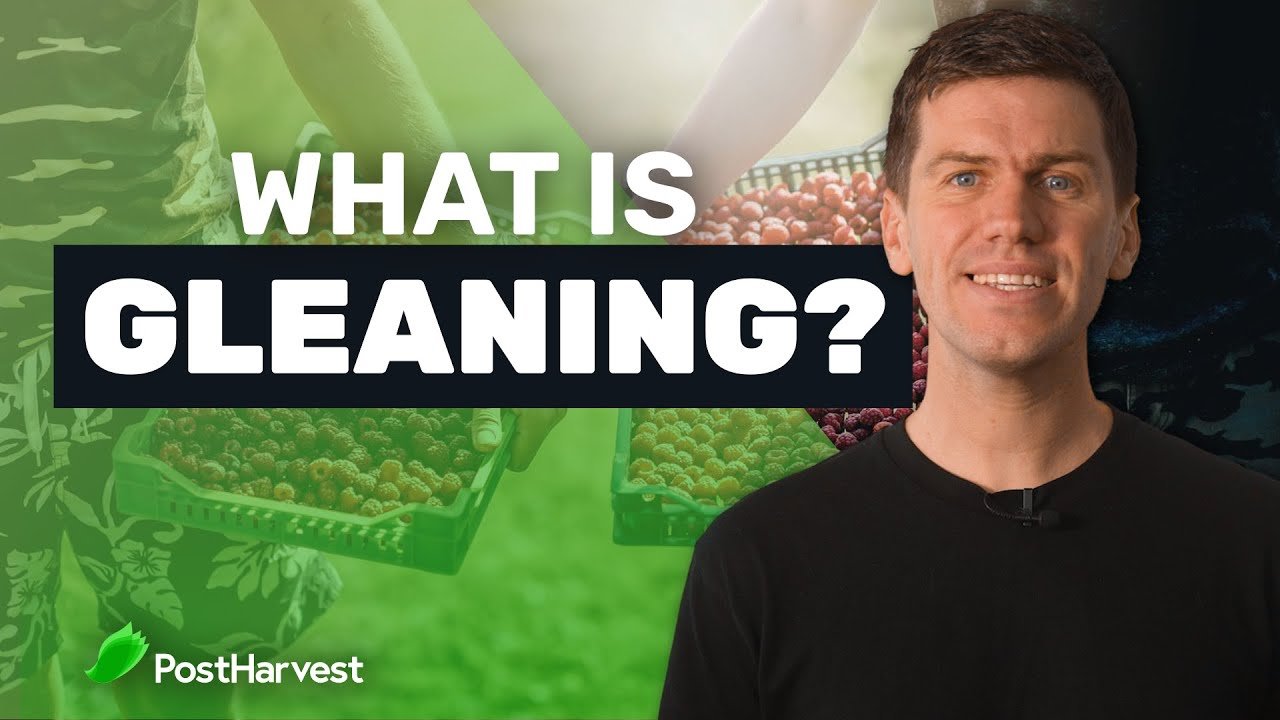What is Gleaning?
When you think of harvesting, what comes to mind? Maybe picking apples and other fruits from a tree in your backyard? Harvesters in grain fields or potatoes and other vegetables pulled fresh from the soil?But have you ever heard of the term gleaning?
Gleaning is a lesser-known agricultural process that has been around for centuries.This harvesting technique focuses on food recovery and has recently seen a reemergence in a lot of modern farms. Although gleaning is not as commonly used in modern times as it was many centuries ago, there are many benefits to this method that can benefit farmers and their communities.
Read on to learn more about the concept of gleaning and its market benefits.
What does “gleaning” mean anyway?
Glean: (‘glēn) verb
to gather or collect (something) in a gradual way.
to search (something) carefully.
to gather grain or other material that is left after the main crop has been gathered.
Gleaning is a term used in the agricultural industry to describe the collection of crops left in the field after all other available food has been harvested. This practice, with roots tracing back to biblical times, continues to play a crucial role in modern agriculture.
There are numerous benefits to gleaning, prompting more farmers to incorporate this harvesting technique into their operations. The food recovery resulting from gleaning enhances the economic profitability of harvesting farmers' fields. Beyond the financial aspect, modern gleaners also collect fruit and vegetable resources that would otherwise end up in landfills, rendering this reaping method more sustainable.
Ancient History
Gleaning has served as a significant form of social welfare for well over 2,000 years of farming history. The Old Testament of The Bible mandated Hebrew farmers to leave a portion of their crops unharvested, allowing poor neighbors and strangers to enter their land to pick what remained for themselves and their families.
In England and France, the government safeguarded the rights of the rural poor to glean. This practice permitted gleaners to collect leftover crops and resources from the ground of nearby farmers' fields. Picking leftover crops for the local community was an integral part of farm life and the harvest process for hundreds of years, until new private property laws and farming technology began to restrict gleaners' rights. It was common to see people in fields picking leftover crops until after the end of World War II.
Recent History
In 1987 the U.S. House of Representatives Committee on Hunger held a hearing to raise awareness and support for gleaning organizations across the US. Nine years later President Clinton signed the "Good Samaritan Act", which encourages individuals and organizations to donate excess fresh produce to food recovery instead of throwing it away as food waste by protecting donors from liability on any food donation made in good faith.
Now there are gleaning organizations across the country, and over 20 organizations in California alone! The Society of St. Andrew, is a nonprofit organization that has been gleaning in the United States since 1983, has distributed food in every state except Alaska and Hawaii and has recovered over 700 million pounds of agricultural products.Gleaners today – predominantly faith-based and non-profit gleaning organizations, use volunteers to recover and collect food from harvested farms, restaurants, grocery stores, wholesale markets, Farmers Markets, and backyards to then distribute food to the poor, hungry, and in need within local community programs.
Future of Gleaning
Unfortunately, we need gleaning programs more than ever right now. A recent report estimated that as much as 45% of the fresh produce we globally produce is never eaten. Organizations worldwide are increasingly recognizing food waste recovery as one of the most efficient ways to address the future of food security, waste, and sustainability.
Numerous organizations are considering gleaning and devising innovative approaches to collecting harvested fruit and vegetable supplies, transportation, and the distribution of gleaned products within the community. Both non-profit and for-profit organizations are leveraging social media and the Internet to connect abundance with need. Additionally, there are food waste recovery apps in development in several western nations.
Organizations like Food Forward are exploring new methods of gleaning, but the fundamental idea remains the same: Harvest Food, Fight Hunger, Build Community.
Summary
Gleaning has been an essential part of agriculture since ancient times, but today gleaning is more important than ever. Gleaning provides food for poor, hungry, and in need people while reducing waste and improving sustainability on farms.While gleaning has been around for centuries, it’s not just a quaint country tradition. The truth is that there are many benefits to the practice of gleaning for the modern world and modern farm—both in terms of sustainability and economics.
Gleaning also provides an opportunity to educate volunteers and children about where their food comes from. This education can have lasting benefits for generations to come!If you've enjoyed learning about what it means for gleaners to glean post-harvest food products, check out more of our articles here or check out our free online courses on all things post-harvest, including cold chain storage, transportation, food preparation, and more.

